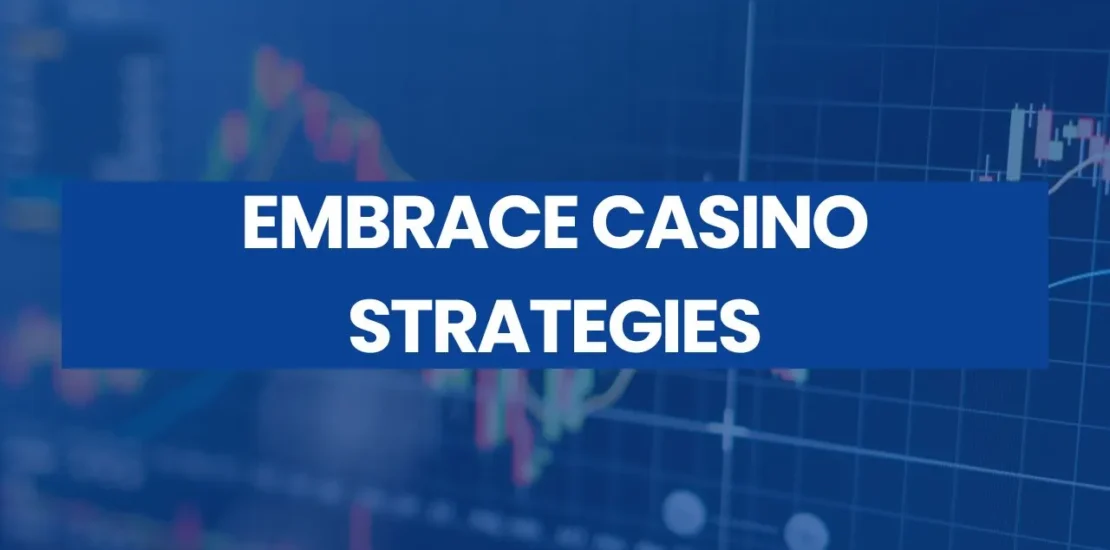- March 18, 2025
- Posted by: Shane Daly
- Category: Trading Article

To trade like a casino, accept that individual outcomes are random while your edge pays off over time. Don’t abandon strategies after losses—they’re just statistical costs of doing business. Track your results to confirm your edge works, maintain discipline during drawdowns, and follow a consistent checklist to keep emotions in check.
By embracing this mindset, you’ll stop chasing perfect trades and start building consistent profits like the house always does.
Quick Overview
- Adopt a casino operator’s mindset by accepting statistical probabilities over perfect trade outcomes.
- Trust your proven trading system through winning and losing streaks as casinos trust their house edge.
- Maintain consistent execution using a trading checklist rather than chasing individual wins.
- Treat losses as expected business costs rather than personal failures, just as casinos view payouts.
- Manage risk with predetermined position sizes and accept drawdowns as mathematical certainties.
Why Successful Traders Think Like Casino Operators
While most struggling traders chase the perfect trade, successful traders adopt a completely different mindset—they think like casino operators.
They understand that wins and losses are random in the short term, but a statistical edge pays off over time.
Like casinos, smart traders don’t panic after a few losses. They trust their proven systems and let probability work in their favor.
Successful traders embrace losses as statistical costs, trusting their edge while others chase perfect results.
This trader mindset welcomes imperfection and focuses on long-term results.
The casino parallels are clear: both rely on repetition of advantageous odds, not perfect execution.
When you accept occasional losses as part of your path to profit, you’re thinking like a winner.
Using a trading checklist helps maintain this casino-like consistency and prevents oversight of essential elements that could affect your trading performance.
Overcoming the Emotional Trading Spiral

How do traders break free from the destructive cycle of emotional decisions? It starts with recognizing that losses aren’t personal betrayals but natural occurrences in trading.
Developing emotional resilience means accepting imperfection. You’ll never win every trade, and that’s okay. Instead of abandoning strategies after losses, stick with proven methods through downturns.
Trading psychology improves when you approach markets like a casino—focused on statistical edges rather than individual outcomes. Remember, even casinos lose individual bets while maintaining profitability.
When you feel frustration building, step back. Review your rules, confirm your edge exists, and trust the process. Emotions fade, but disciplined approaches endure.
Avoiding Strategy Abandonment After Losses
One of the most telling patterns in trading behavior is abandonment of working strategies after a series of losses.
You might feel tempted to ditch your approach when facing consecutive losses, but this reactive decision often leads to missing the eventual upswing.
Strategy resilience requires understanding that losses are normal, not signals of failure.
Like casinos, successful traders maintain their edge by sticking to proven methods through downturns.
Loss acceptance means viewing setbacks as part of the process rather than reasons to change course. Remember, even the most profitable systems experience losing streaks.
Your ability to stay disciplined during these periods ultimately determines your trading success.
Using basic options strategies can provide better capital management during periods of market volatility while improving your ability to manage risk.
Taking ownership of trading decisions requires accepting losses as an inevitable part of the journey toward consistent profitability.
The Statistical Edge: Your Path to Consistent Profits
Just as casinos don’t rely on luck to generate profits, you’ll need a measurable statistical edge to succeed in trading.
This edge comes from identifying repeatable statistical trends in markets that you can exploit consistently.
Statistical Edge in Trading
A statistical edge in trading refers to identifying patterns or trends in the market that have a high probability of recurring, allowing traders to exploit them consistently for profit. Here’s an example:
Mean Reversion in Stock Prices:
- Some stocks tend to revert to their average price over time. For instance, if a stock’s price deviates significantly from its historical moving average (e.g., 20-day moving average), a trader might anticipate that the price will “revert” back to the mean.
- A trader could develop a strategy where they buy the stock when it is significantly below the moving average (oversold) and sell it when it returns to or exceeds the average. Conversely, they might short the stock when it is significantly above the moving average (overbought) and cover the short when it reverts.
This strategy works because it exploits the statistical tendency of certain stocks to oscillate around a mean price, especially in less volatile or range-bound markets. Backtesting this strategy on historical data can help confirm its reliability and profitability over time.
Why This Works
The edge comes from the repeatable statistical trend of mean reversion, which is observable in many financial instruments. By consistently applying this strategy with proper risk management, traders can achieve a positive expectancy over the long term.
Your goal isn’t to win every trade but to win more than you lose over time. Track your results carefully to confirm your approach generates profit consistency.
Remember, even with a solid edge, you’ll face losing streaks.
What separates successful traders from failed ones isn’t avoiding losses altogether—it’s maintaining discipline through downturns.
When you trust your proven edge, temporary setbacks become merely part of the journey toward long-term profitability.
A win rate of 60% to 80% typically leads to profitable trading systems if your position sizing is appropriate.
Practicing effective risk management strategies can significantly reduce your exposure to market volatility while preserving your capital for future opportunities.
Managing Risk While Embracing Drawdowns
Every successful trader faces periods of drawdown—it’s not a matter of if but when. Like casinos, you must develop risk awareness to weather these inevitable storms.
Instead of abandoning your strategy after a few losses, recognize that drawdowns are simply part of the mathematical reality of trading. Your approach should acknowledge drawdown acceptance rather than fighting it.
Set clear risk parameters, limit position sizes, and maintain adequate capital reserves. When losses occur, resist the urge to make emotional adjustments to your system. Understanding that the brain employs basic instinctual reactions under stress can help you prevent emotional decision-making during challenging trading periods.
Your Questions Answered
How Long Does It Typically Take to Develop a Profitable Trading Edge?
You’ll need 6-12 months to develop your trading strategy development process, though profit consistency often takes 1-2 years of disciplined practice, testing, and refinement.
What Percentage of Trades Should Be Winners in a Healthy Strategy?
Your win rate doesn’t need to be high for a profitable strategy. You can succeed with 40-60% winning trades if your risk management maintains favorable risk-reward ratios.
Should I Adjust Position Sizing During Winning Versus Losing Streaks?
Don’t adjust your position sizing based on streaks. Maintain consistent risk parameters regardless of recent outcomes. Smart streak management requires discipline, not reactionary position adjustment during emotional periods.
How Do Successful Traders Manage Their Psychology During Extended Drawdowns?
You manage psychology during drawdowns by maintaining mindset resilience through routine review of your trading plan. Practice emotional control by recognizing drawdowns as normal, not failures requiring immediate strategy changes.
Are Certain Market Conditions Better for Implementing Casino-Style Trading Approaches?
Yes, your trading methods work in all market conditions, but trending markets typically offer clearer edges than choppy ones for implementing probability-based approaches consistently and profitably.



